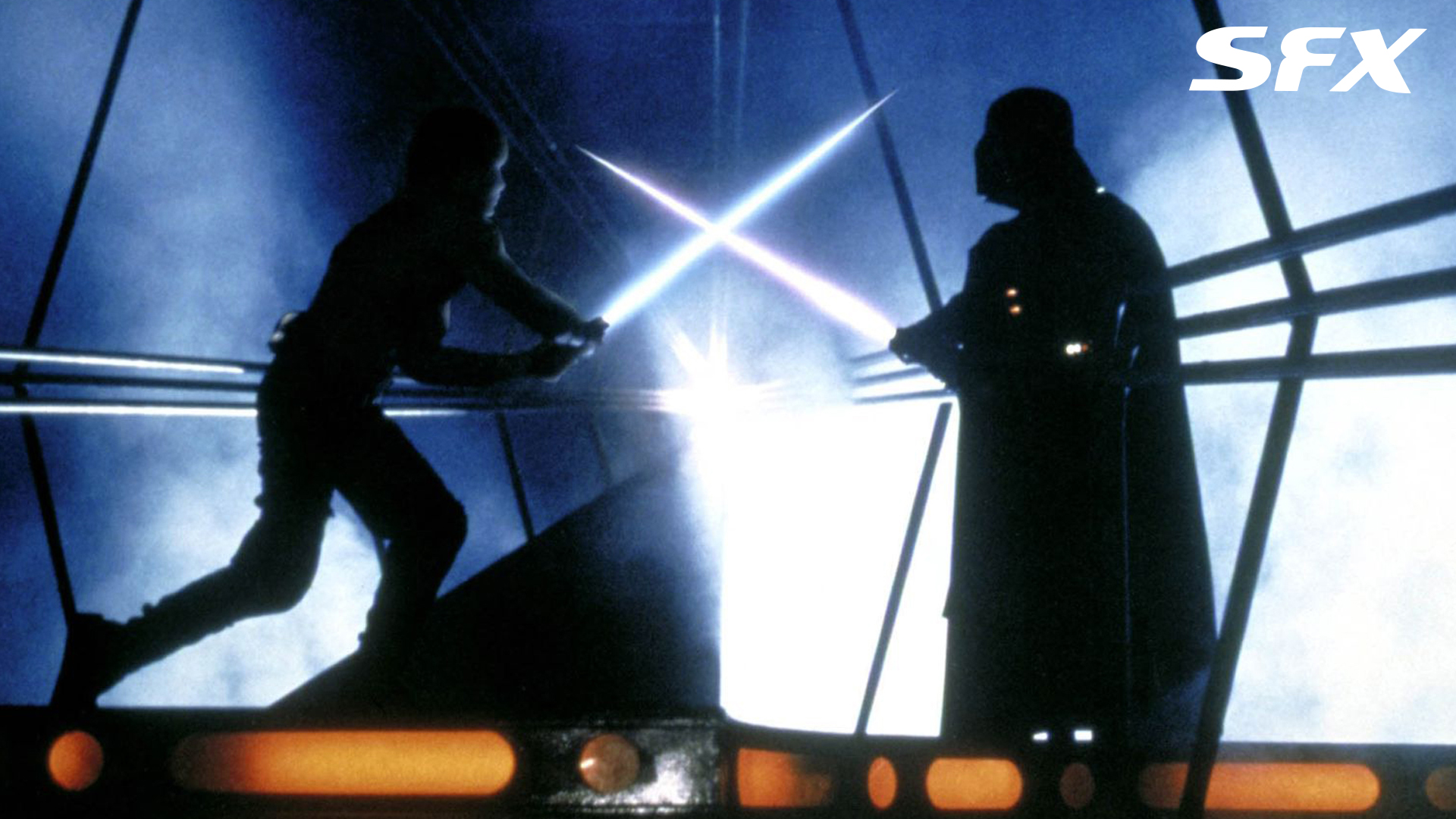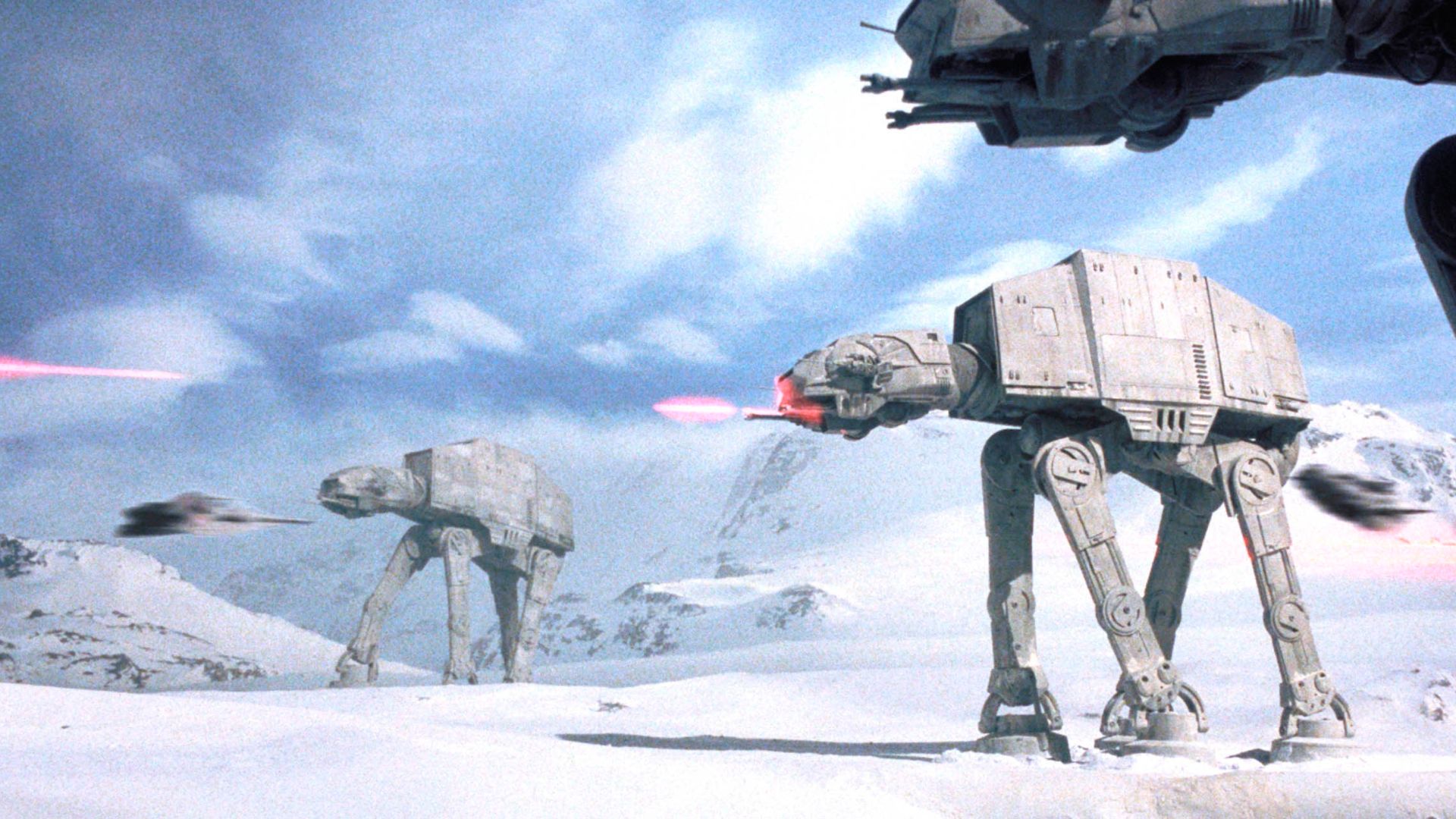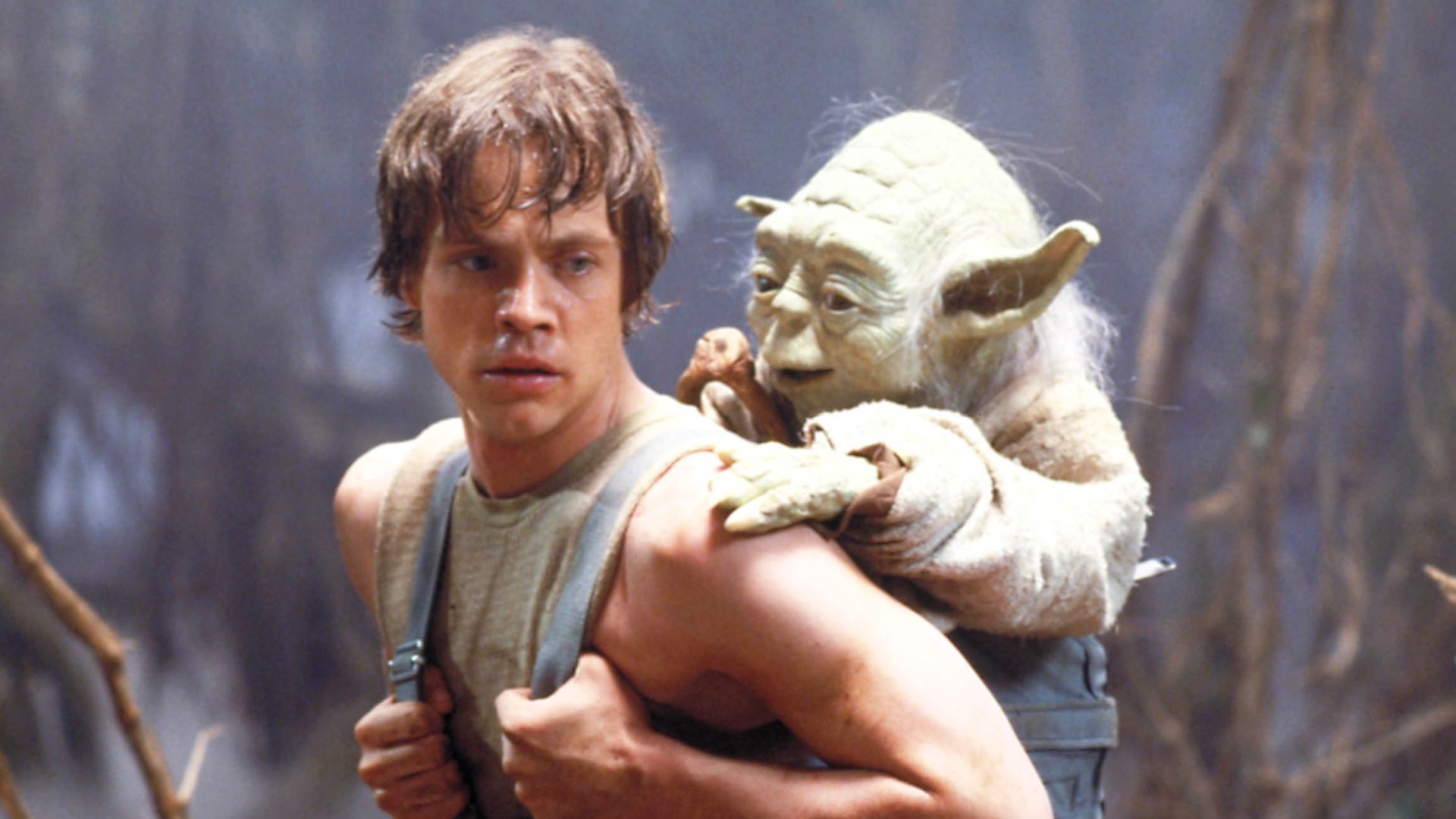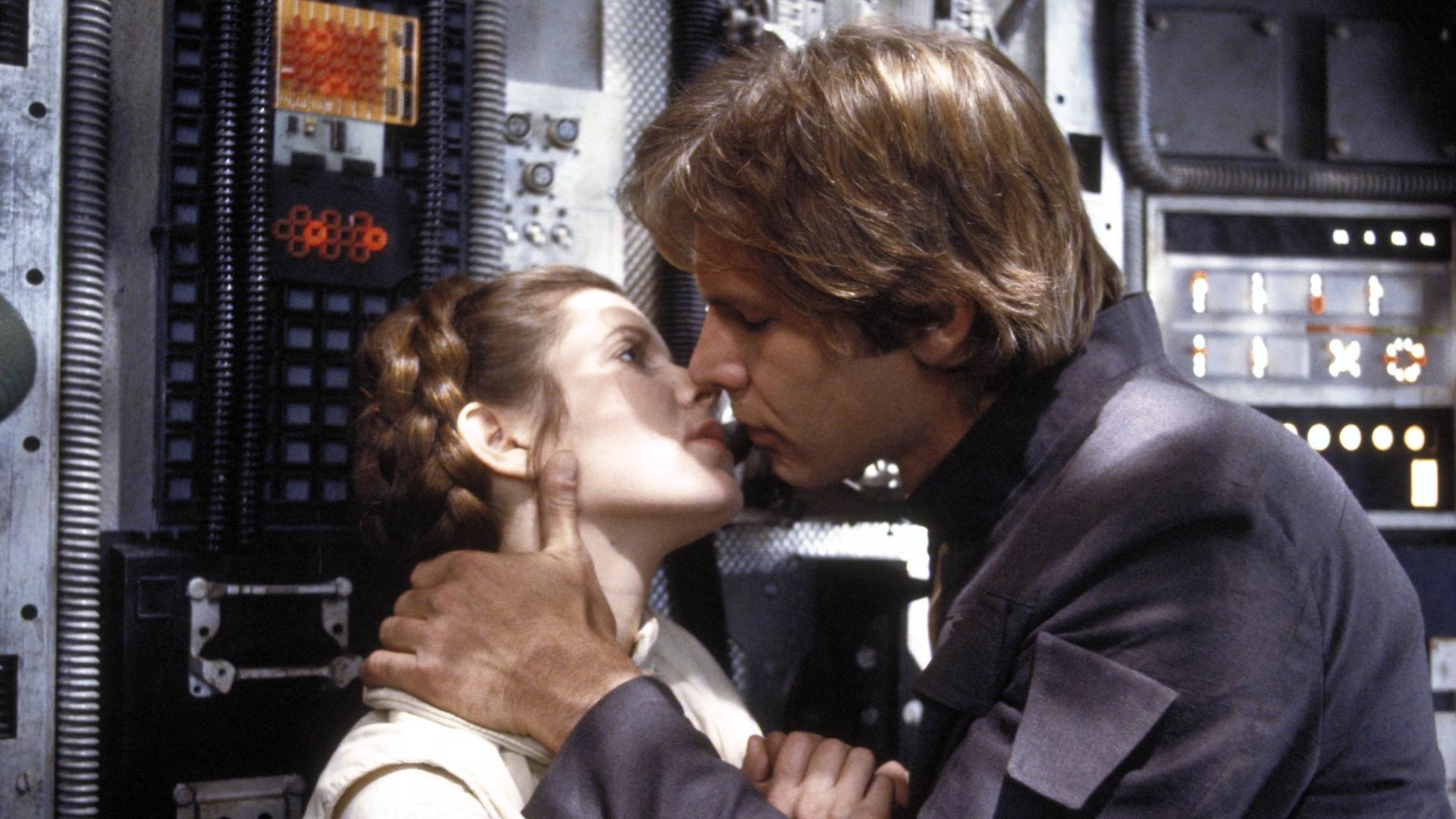How Star Wars: The Empire Strikes Back redefined what a sequel could be
As Empire Strikes back turns 40, SFX magazine looks at how George Lucas and Irvin Kershner created an unprecedented blockbuster sequel for the ages

These days anybody who makes a sequel to a hit movie can’t wait to tell you that it’s darker and more mature than what came before. When The Empire Strikes Back took the Star Wars saga in a bleaker, entirely unexpected new direction, however, it felt as fresh and new as the original movie had three years earlier.
This was a kid-friendly movie that turned narrative convention on its head by putting its big action set-piece in the first act, before ending on a massive downer that left the story defiantly unresolved. While it made significantly less money than its predecessor – until Solo, it was the worst performing of all the live-action Star Wars – it’s now regarded as the pinnacle of the franchise, the one where storytelling and drama lived up to the visuals. SFX looks back at five big reasons it’s long remembered...
A new order

"Do or do not, there is no try."
It's almost a cliché that nobody expected much from Star Wars at the box office – not even its creator George Lucas, whose canny move to negotiate the rights to any sequels turned out to be an act of incredible foresight. Once the first movie had become the biggest film of all time, a sequel was inevitable, but Lucas took the bold step of financing the film himself, using “everything I owned” as collateral. It was an incredibly risky move – he ran close to the financial wire on several occasions, with 20th Century Fox eager to swoop in to seize back control – but it meant Lucas was free to tell the story his way.
“This film was not a traditional sequel,” he said on The Empire Strikes Back commentary track. “It didn’t have a beginning and an end, [it had] a lot of big action sequences early on in the movie and it ends on a personal note. I’m not sure a studio would have gone along with that if they had their say.”

Enjoying this feature? Make sure to never miss out again and subscribe to SFX Magazine – or order a single copy now
Lucas knew he wanted the sequel to be less goofy and more sophisticated than his hit original, but decided he wasn’t the writer or director to make it. He initially signed up Leigh Brackett, writer of Bogart/Bacall classic The Big Sleep, to turn his story into a script, but she died before completing the first draft. Lucas then hired Lawrence Kasdan (already at work on Raiders Of The Lost Ark) to take over, a decision that arguably led to the characters – with the possible exception of R2-D2 and Chewbacca – sounding like actual humans.
When it came to finding a director, Lucas went really leftfield, hiring his former University of Southern California mentor Irvin Kershner. “I immediately said, ‘I’m sorry but I can’t do this,’” Kershner told SFX magazine in 2008. “I think that it would be silly for me to make a film that tries to better what you have done. George said to me, ‘This has to be even bigger than the first one – as well as being even better.’ Even then I still turned it down. But after a month of him phoning me, I finally agreed to go up to his studio.”
Get sneak previews, exclusive competitions and details of special events each month!
Kershner had no previous experience of special effects films, but he proved to be the ideal fit. Far more comfortable handling actors than his new boss, he was given freedom to direct the film in London, while executive producer Lucas stayed in California to look after the effects scenes, and shield Kershner from any studio politics. This dream alchemy of talent and creativity behind the camera has never been matched in the Star Wars canon.
AT-ATs and asteroids

"Never tell me the odds."
The Empire Strikes Back may have been an independent production (albeit one of the biggest in history), but that didn’t mean it wasn’t ambitious. Its budget was more than double that of A New Hope, and it had significantly more effects shots.
Breaking with convention, a large proportion of those would come in the first section of the film, as the Rebels did a runner from their secret base on the icy world of Hoth. “I wanted the sequence to be exciting and unique,” says Lucas, “but at the same time I didn’t want it to overwhelm the end of the movie.”
Unique it certainly was, as a herd of giant Imperial Walkers (AT-ATs) – inspired, in part, by the tripod war machines from HG Wells’s The War Of The Worlds
– trampled through the Hoth snow, Rebel Snowspeeders swarming around them like flies.
While most of the effects shots in Star Wars had taken place against the black of space, the white snow of Hoth meant big challenges for the geniuses at Industrial Light & Magic – not least because the dark matte lines surrounding every VFX element would be more visible. The AT-ATs themselves were created as stop-motion models stomping through meticulously realised miniature backgrounds, with snow made of baking powder and glass beads (the effects team spent the shoot in protective goggles and respirators), and animators popping up through trap doors in the floor to choreograph the ground assault.
When the Millennium Falcon eventually makes it past the Imperial blockade, it immediately finds itself in Empire’s other major set-piece, as Han Solo defies odds of 3,720 to 1 by successfully navigating an asteroid field. It’s a magnificent piece of filmmaking, the perfect blend of John Williams’s score, sparky interplay on the Falcon and balletic visual effects. While the Falcon had moved in flat, straight lines in A New Hope, it was now showboating with complicated aerobatics around floating boulders.
Some of the effects, however, were defiantly old school. “Originally we had men rocking the cockpit around and it looked like hell,” Kershner told SFX. “No matter how hard they tried they couldn’t get the motion I was looking for. So I used a handheld camera for those scenes in the asteroid belt and if I said, ‘Right!’ the actors threw themselves to the right and the cameras went to the left.”
The Force awakens

"Judge me by my size, you do?"
Even by the standards of mystical energy fields, the Force was a nebulous concept in A New Hope. Sure, there was the odd Jedi mind trick, the strangling of a subordinate, and some million-to-one nailing of a womp rat-sized target, but it never seemed that big a deal. In The Empire Strikes Back, however, the Force truly awakens.
From the moment an upside-down Luke summons his lightsaber to strike down a wampa, it’s easy to see why Ben Kenobi was such a Force fanboy – indeed, it’s not long before we’re seeing an X-Wing fly by Force propulsion, visions of the future, and immersive cave-based experiences open to deep philosophical interpretation.
Unfortunately, Lucas had killed off Obi-Wan, his only experienced Force practitioner, leaving a big hole in the exposition department. The character to fill the hole was a diminutive old Jedi on the jungle world of Dagobah; unfortunately, nobody had any idea how to make him real.
One early idea for Yoda would have featured a trained monkey in a mask, but for obvious reasons that was quickly abandoned. Lucas instead turned to Jim Henson to help create the most ambitious puppet co-star in cinema history.
Yoda was designed by prosthetics legend Stuart Freeborn (creator of the apes in 2001: A Space Odyssey’s “Dawn of Man” sequence) who based Yoda’s look on a mixture of his own face and Albert Einstein’s wrinkles – he felt the latter conveyed wisdom and intelligence. Frank “Miss Piggy” Oz was the puppeteer who had to get his vocal cords around Yoda’s backwards syntax.
“Yoda was definitely the most difficult character to design,” recalled Kershner. “He was supposed to blink, and his eyes were meant to move around and focus. His ears had to move as well. But when we actually shot Yoda I couldn’t get the eyes to blink or his ears to move around. Nothing worked with that puppet and it took us a lot of time to fix that.”
Working with Yoda proved particularly challenging for Mark Hamill who, as Luke Skywalker, was “the only human being on the call sheet for months”. Unable to hear anything said by his rubbery green co-star, he had to act to timings and directions given by Kershner. Remarkably it all came together, and Yoda became the breakout star of the film.
Love story

"I love you." "I know."
Love stories in Star Wars can go very, very wrong – you just have to look at Anakin Skywalker’s issues with sand to see that – but The Empire Strikes Back is the exception, the one place in that galaxy far, far away where romantic chemistry exists.
Early Empire scripts got embroiled in a Luke/Han/Leia love triangle – Luke and Leia being twins wasn’t part of the story until work began on Return Of The Jedi – but thankfully the only element of that particular plotline to survive was that very awkward kiss on Hoth. Instead, Han and Leia spend half the movie sparring like a couple in a classic screwball comedy, until they surrender to the inevitable kiss. “A kiss in this film is almost equivalent to intercourse,” Kershner joked on the Blu-ray commentary.
Han and Leia’s arc culminates with the second most famous line in the movie, but it very nearly didn’t happen. With Han about to be turned into a novelty work surface in Bespin’s carbon freezing chamber, his reply to Leia’s declaration of love was originally scripted as “I love you too.” But Kershner was never happy with the response, so although he shot the scene as scripted, he worked with Harrison Ford to find an alternative. It was only on the last take that Ford ad-libbed a casual “I know,” and history was made. Lucas was still sceptical and insisted on test screenings to find out what audiences preferred – we all know their answer...
Harrison Ford and Carrie Fisher are never better in Star Wars than they are in Empire, but Kershner and the writers deserve just as much credit for Han and Leia’s love story hitting the mark. Even Lucas would probably admit that, had he been writer and director, their relationship wouldn’t have sizzled quite so much.
Daddy issues

"No, I am your father."
While The Empire Strikes Back got its big action scenes out of the way early, there’s no question it had saved its most powerful moment until last.
“When George told me at the beginning of our sessions that Darth was Luke’s father, I thought, ‘Oh my god, that’s wonderful,’” said writer Lawrence Kasdan. “Here was this wonderful fantasy that got back to some primal issues. Was my father a benevolent figure or was he an evil figure? Am I going to be like him? Was he once a better person? We were starting to build what isn’t in the first film, that there’s a person behind the mask, that Darth has been something else, and this yearning he has to enlist Luke is not just the bidding of the Emperor. It is an urge on his part to bring his son into the fold, so as soon as you’re doing that it’s really interesting.”
The revelation that Darth Vader is Luke Skywalker’s dad was such a big deal that it didn’t appear in the original script. Instead, the actor in the Darth Vader suit, Dave Prowse, was given dummy lines to keep the world off the scent – the “Obi-Wan killed your father” faux-bombshell found its way into British tabloids, so it was a canny move on Lucas’s part.
Few on set knew the truth, with Kershner painstakingly choreographing Prowse’s performance, and Hamill briefed at the last minute so he could react appropriately.
“I was very concerned about this ending, especially in terms of children and whether they’d be able to manage it,” admitted Lucas. “But I talked to a number of psychologists who basically said most kids, if it’s too intense for them, will simply deny that it’s true, they’ll deny that he is his father, [think] he’s just lying to him. My biggest concern about this ending was that it really wasn’t an ending – the bad guys win and the good guys limp home wounded.”
Ironically, Empire’s dark heart and unresolved cliffhanger were big reasons fans came to love it so much. With its cosmic teddy bears, Death Star assault redux, and happily-ever-after ending, Return Of The Jedi could never expect to have the same impact. Star Wars remains a powerful force in the universe, but there’ll never be another film quite like The Empire Strikes Back.
This feature originally appeared in SFX magazine. Subscribe now and get money off both digital and physical bundles. For more on Star Wars, check out our pieces on:
Richard is a freelancer journalist and editor, and was once a physicist. Rich is the former editor of SFX Magazine, but has since gone freelance, writing for websites and publications including GamesRadar+, SFX, Total Film, and more. He also co-hosts the podcast, Robby the Robot's Waiting, which is focused on sci-fi and fantasy.


